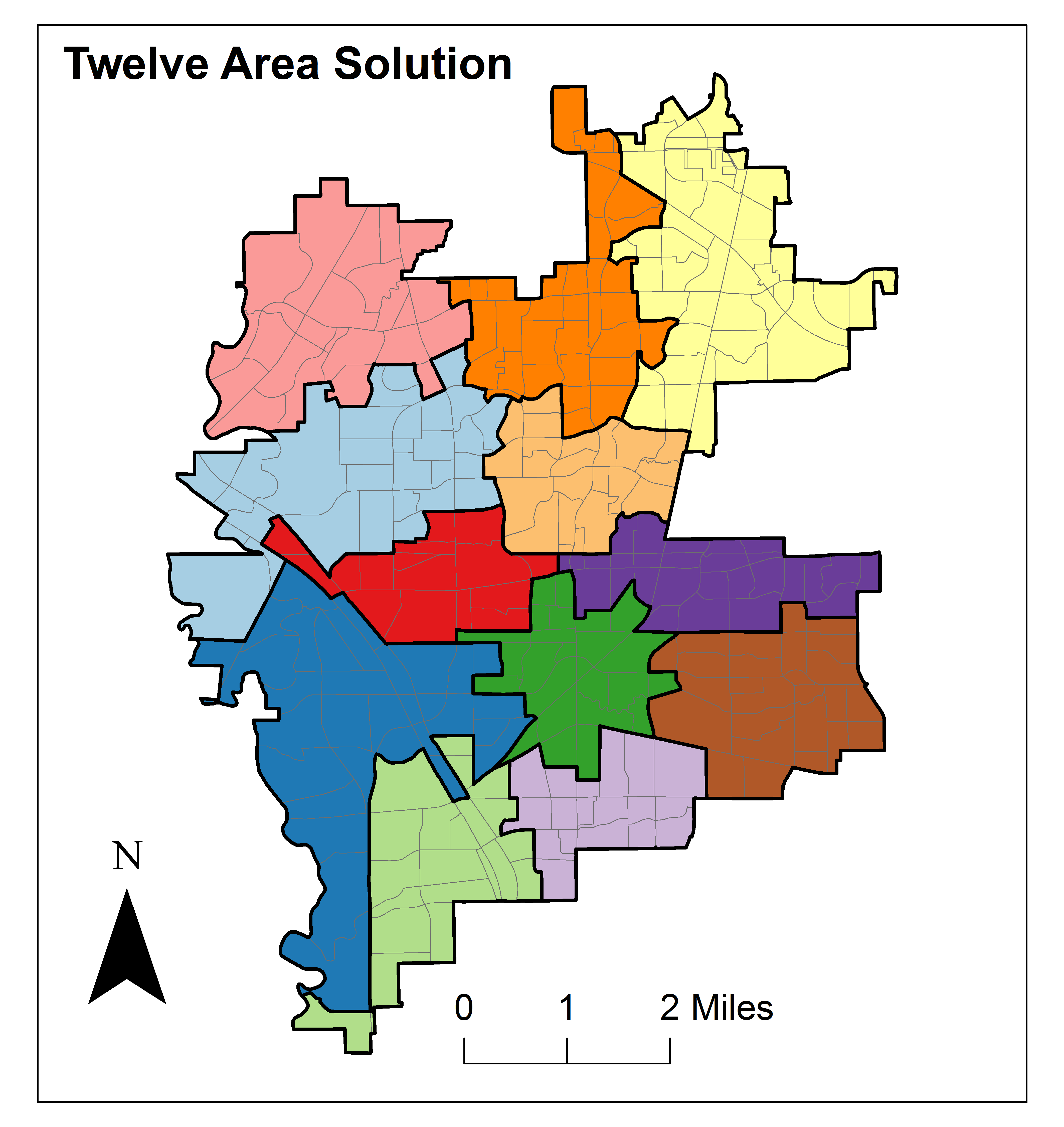Workload Analysis Services
Workload analysis for police departments can span different areas, such as:
- Do you have the right number of officers to effectively respond to calls for service?
- Are you spatially allocating officers to minimize response times?
- Are you effectively triaging detective case assignments?
These questions often mix advanced statistical analysis, discrete event simulations, and optimization models (e.g. linear programming), to develop strategies, policies, or empirically justified forecasts to better meet the demands for your police department.
Redistricting
Response times are critically important for public safety – faster response times by police and emergency services can make the difference between life and death (Circo & Wheeler, 2021). The CRIME De-Coder has written custom applications to reduce drive responses to calls for service, as well as to rebalance workloads via redistricting (Wheeler, 2018).

Implementing Gun Violence Reduction Initiatives
The CRIME De-Coder has worked with multiple police departments implementing gun violence reduction initiatives. These include programs like Focused Deterrence, or chronic offender initiatives. CRIME De-Coder has developed custom social network analysis methods (Wheeler et al., 2019), and has experience in linear programming to identify optimal allocation models.

Prioritizing Detective Case Loads
Optimizing workloads is not just about responding to calls for service. Effectively allocating detective resources can result in much better case clearance rates and the ability to investigate more cases. Predictive models can make detective assignments less ad-hoc and less likely to miss serial offenders that may be contributing to regular crimes.
Contact Me for Workload Analysis Services
If any of these examples interest you, contact me today for a free consultation. The CRIME De-Coder can apply these projects to your agency, as well as more traditional workload analysis.
References
- Circo, G.M., & Wheeler, A.P. (2021). Trauma center drive time distances and fatal outcomes among gunshot wound victims. Applied Spatial Analysis and Policy, 14, 379-393.
- Wheeler, A.P. (2018). Creating optimal patrol areas using the p-median model. Policing: An International Journal, 42(3), 318-333.
- Wheeler, A.P., McLean, S.J., Becker, K.J., & Worden, R.E. (2019). Choosing representatives to deliver the message in a group violence intervention. Justice Evaluation Journal, 2(2), 93-117.
- Wheeler, A.P., Riddell, J.R., & Haberman, C.P. (2021). Breaking the chain: How arrests reduce the probability of near repeat crimes. Criminal Justice Review, 46(2), 236-258.